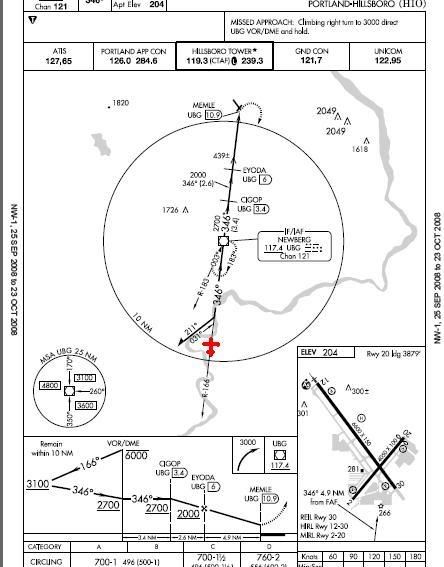because the course reversal allows for a 1 minute pattern. But legally, is that correct?
Your case is actually a bit easier than that because you have an initial segment that extends 5.6 nm from the FAF. You can descend down to 2700 once you're within that distance.
However, there are many approaches that have the 1 min holding pattern only. There FAA has provided no guidance on what constitutes "established" in this scenario. My argument would be that since the 1 min holding pattern has its origins from the OM, the 1 min is only valid if you start there. Coming inbound, I would maintain altitude until the fix. However, that would be a problem in your scenario. In our own similar approach, the hold-in-lieu is actually at the intermediate fix, not the FAF, so holding your altitude isn't a problem. And so far, our ATC has given the proper clearance, "cross EFPUB at or above 2500", rather than the incorrect "until established." I have discussed this issue with the guy who wrote the article I referenced you to and he said that the FAA was aware of the fuzziness of the situation, but so far hadn't addressed it.
As for the OLV approach I showed you, you have the right idea that you can't descend until MANDD. However, ATC **expected** you to because 2500 interfered with the traffic into MEM. They wanted you down, but couldn't clear you down because MVA was 2500. They didn't understand why the pilot didn't go down to 2,000 immediately. Making it more confusing to them, many pilots did.
The point I wanted to make is that some instructors justified going down because of the "rule" you can descend once you're within 10 nm of the FAF. As you must realize, this is an incorrect rule. That rule is often correct when 1) you have a PT, and 2) you have a published intermediate segment. Neither is the case on this approach, but they used a faulty understanding of instrument approaches to justify unsafe behavior.
Others had the understanding that the localizer IS a segment of an instrument approach. Not so. The localizer will extend much further than the black line and it hasn't even been surveyed for obstacles outside the charted limits.
Also in this case, ATC contributed to this behavior because they didn't understand the approach either. I discussed the issue with the procedures guy at MEM approach and finally got him to agree that the controllers were acting wrongly. However, nothing changed. Finally I spoke with a guy in the quality control division of the FAA in Oklahoma City who agreed to issue a notam to raise the crossing altitude at MANDD to 2500, which solved the problem until we got an ILS a year later.
So a further point is that ATC is wrong sometimes and the prudent pilot needs to learn not only his own responsibilities, but those of ATC as well.



